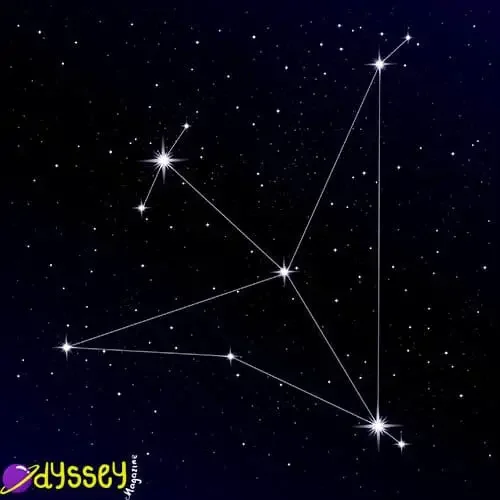Aquila Constellation | Facts about the Eagle
Now, Aquila is one of the more interesting constellations up there in the sky. It’s one of the larger constellations, and it has a multitude of different stars within the constellation for us to talk about. It’s a great one to start out with if you’re in the Northern hemisphere, and it can be found pretty easily too. Let’s look at Aquila in closer detail and find out more about it.
- Bordered By; Sagitta, Hercules, Ophiuchus, Serpens Cauda, Scutum, Sagittarius, Capricornus, Aquarius, Delphinus.
- Named after; The Eagle
- Declination; -12 to 20°
- Brightest Star; Altair.
- Best seen; July
- Size rank; 22nd
- Constellation family; Hercules
- Pronunciation; A-QUEE-LA

It’s pretty clear to see why this constellation takes it’s name from the Latin word for Eagle. Because this is one of the Herculean constellations, it’s said that this actually has a very close relation to Zeus. This is because eagles have been used in association with Zeus throughout his history, and in some stories it’s even said that Zeus himself transformed into an eagle. In fact, this constellation has often been referred to as a type of bird throughout it’s history, with the Roman referring to it as Vultur Volans.
Like many of the different constellations up in the night sky, this one was one of those found in the writings of Ancient Greek Ptolemy’s writings. Ptolemy lived through the Roman Empire, though he often noted a lot of Greek philosophers in his work, and much of his writings about astronomy is likely to have come down from the Babylonians.
The best time of year to see this constellation in July. Typically, you can find it two ways. Firstly, by finding Altair, as it is extremely bright and visible to the naked eye. You can also look for nearby constellation Cygnus, which is also easy to spot.
- Alpha Aquilae (α) – What is sometimes referred to as Alpha Antilae is nowadays more commonly referred to as Altair. It’s one of the most well known stars in the sky, and it’s highly visible on many nights. It’s overall the twelfth brightest star in the entire sky. It’s very bright to us, because it’s only 15 light years away (which is quite close for a a star!). Unlike other stars, it doesn’t take aspherical shape – instead it’s flatter at the two poles, as it has a high speed of rotation.
- Gamma Aquilae (γ) – This star, Gamma Aquilae, is also well known by the name Tarazed. In star terms, it’s actually a very young star, estimated to be around 100 million years old. However, even though it is much younger than our Sun, it appear to be around 2500x as luminous. It’s name Tarazed is likely to come from the Persian for “beam of the scale”.
- Xi Aquilae (ξ) – This one is also well known as Libertas, and it’s a red giant star that is almost 200 light years away from the Sun. It has a luminosity class of III, which means that the star is estimated to be around 5 billion years old – it’s also around 50x as bright as our Sun.
- Beta Aquilae (β) – The Beta of this constellation is known as Alshain, and as it’s a binary star, it’s split into two different names (A and B). The primary star is a subgiant that’s still bigger than our Sun, and the secondary is a red dwarf star with minimal luminosity.
All in all, this constellation is mainly known for it’s bright Alpha star, with Altair being one of the more well known stars up there in the night sky. This star has a very fast rotating action, which is the main reason why it’s not a sphere shape like our Sun. This is one of the stars known as the Family of Aquilae, along with Tarazed and Alshain, which are all in a row.




